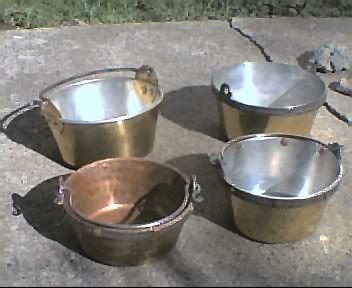I just reciently bought a copper canteen from a reputal dealer in the northeast and he claimed it was ok not to have the copper canteen tin lined. He said it was ok when only water was added into it. My question is can I line the insides with bees wax? Will the bees wax react with the copper? I know I should of bought the stainless steel but I wanted to stay a little more period correct.
Trapper
Trapper






